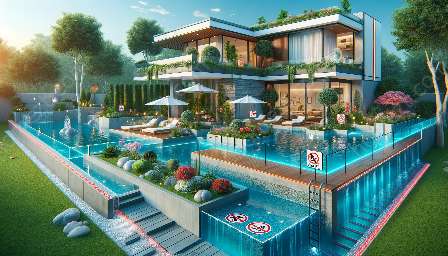Proper spa draining and refilling is essential to maintain the safety, hygiene, and performance of your spa. Without regular maintenance, your spa can become a breeding ground for bacteria and algae, posing health risks to users. In this comprehensive guide, we will explore the importance of proper spa draining and refilling, best practices for maintaining spa safety, and how to ensure the cleanliness of both swimming pools and spas. Whether you are a spa owner or a professional spa technician, you will find valuable insights and tips to keep your spa in top condition.
Importance of Proper Spa Draining and Refilling
Spas provide relaxation and therapeutic benefits, but they require regular maintenance to function properly. Over time, contaminants such as body oils, lotions, sweat, and other debris accumulate in the water, leading to cloudy water and unpleasant odors. Proper spa draining and refilling is necessary to remove these impurities and maintain balanced water chemistry.
Regular draining and refilling also prevent the buildup of dissolved solids and contaminants that can affect the efficiency of the spa's filtration and heating systems. Without proper maintenance, the water quality can deteriorate, potentially causing skin irritation, eye redness, or even more severe health issues.
Best Practices for Draining and Refilling
When it comes to draining and refilling your spa, following best practices is crucial to ensure the safety of the process and the longevity of your equipment. Here are some key steps to consider:
- Turn off the Power: Before starting the draining process, switch off the power supply to the spa to avoid any electrical hazards.
- Use a Submersible Pump: Employ a submersible pump to drain the water efficiently. Ensure that the pump is in good working condition and that the drainage outlet leads to a suitable location, such as a drain or sewage system.
- Clean the Spa Interior: While the spa is empty, take the opportunity to clean the interior thoroughly. Remove any debris, scrub the surfaces, and inspect for any signs of damage.
- Refill with Fresh Water: Once the spa is clean and dry, refill it with fresh water. It's essential to use clean, potable water to maintain the water quality and prevent contamination.
- Balance Water Chemistry: After refilling, test the water and adjust the chemical balance as needed. Proper levels of sanitizer, pH, alkalinity, and calcium hardness are critical for safe and enjoyable spa experiences.
Spa Safety and Maintenance
Ensuring the safety of spa users is paramount for spa owners and operators. Several measures can be taken to maintain spa safety, including:
- Regular Water Testing: Regularly test the spa water to ensure that it meets safety and hygiene standards. Keep records of the test results to track water quality over time.
- Effective Filtration: The spa's filtration system plays a crucial role in removing impurities from the water. Regularly clean or replace the filter cartridges to maintain efficient filtration.
- Safe Chemical Handling: Properly handle and store spa chemicals to avoid accidents or chemical imbalances in the water. Follow manufacturer instructions and safety guidelines at all times.
- Controlled Access: Ensure that spa access is controlled to prevent unsupervised use, especially by children or individuals who are not aware of safe spa practices.
Swimming Pools and Spas Maintenance
Maintaining both swimming pools and spas require similar principles of regular maintenance and proper care. Whether you are managing a spa facility or a pool and spa combination, consider the following tips for comprehensive maintenance:
- Consistent Monitoring: Regularly monitor water quality, equipment performance, and overall spa conditions to address any issues promptly.
- Professional Inspections: Periodically engage professional technicians to conduct thorough inspections of the spa and pool equipment, ensuring that they are in optimal working condition.
- Educational Programs: If managing a public facility, offer educational programs to users about safe spa and pool practices, proper hygiene, and the importance of following facility guidelines.
- Regular Cleaning: Establish a routine for cleaning spa surfaces, removing debris, and maintaining a clean and inviting environment for users.
Conclusion
In conclusion, proper spa draining and refilling, along with a comprehensive approach to spa safety and maintenance, are essential for providing a clean, safe, and enjoyable spa experience. By following best practices, monitoring water quality, and consistently maintaining your spa and pool facilities, you can create a welcoming and hygienic environment for spa users. Whether for personal use or commercial operations, a well-maintained spa ensures satisfaction and contributes to the well-being of its users.


